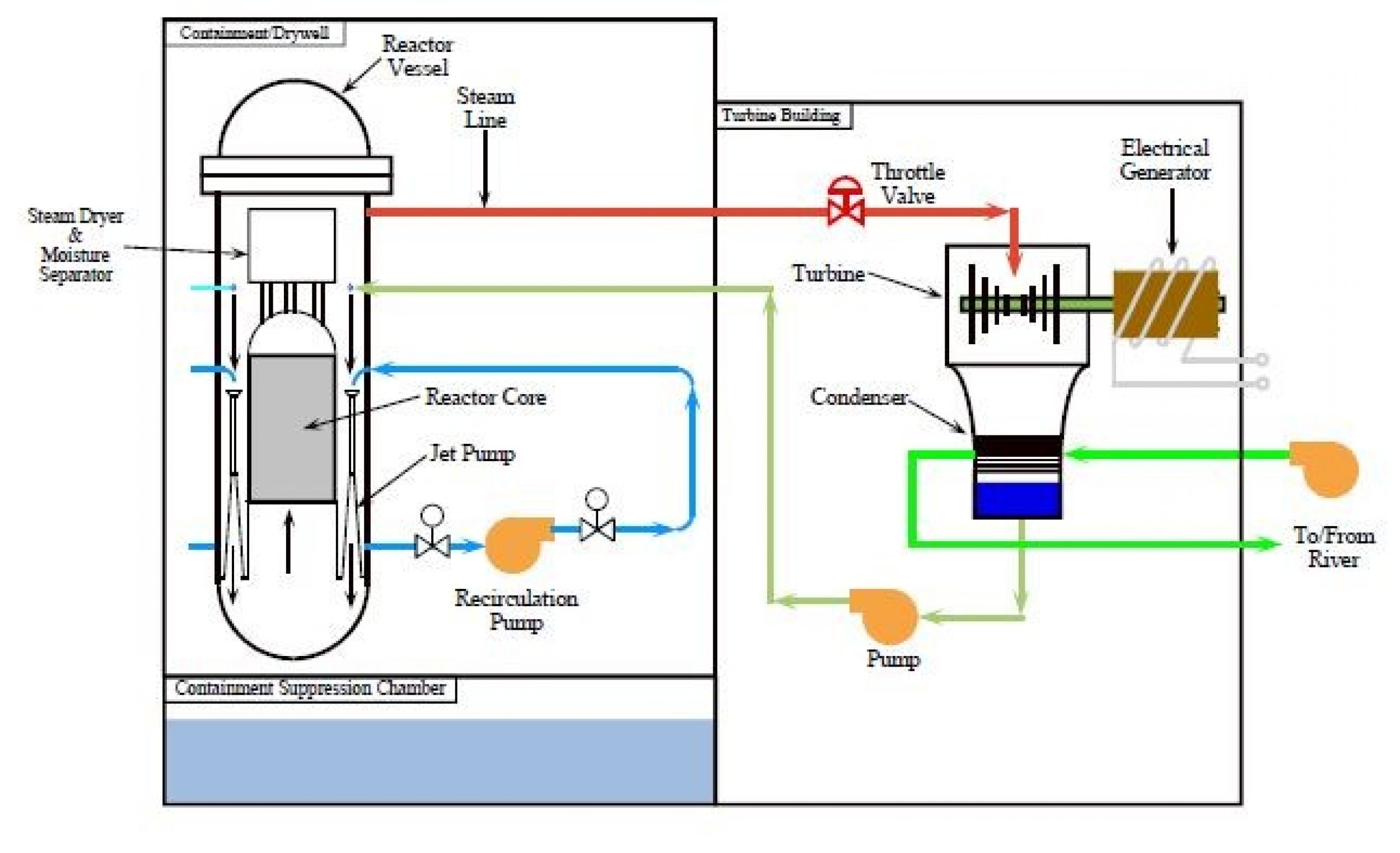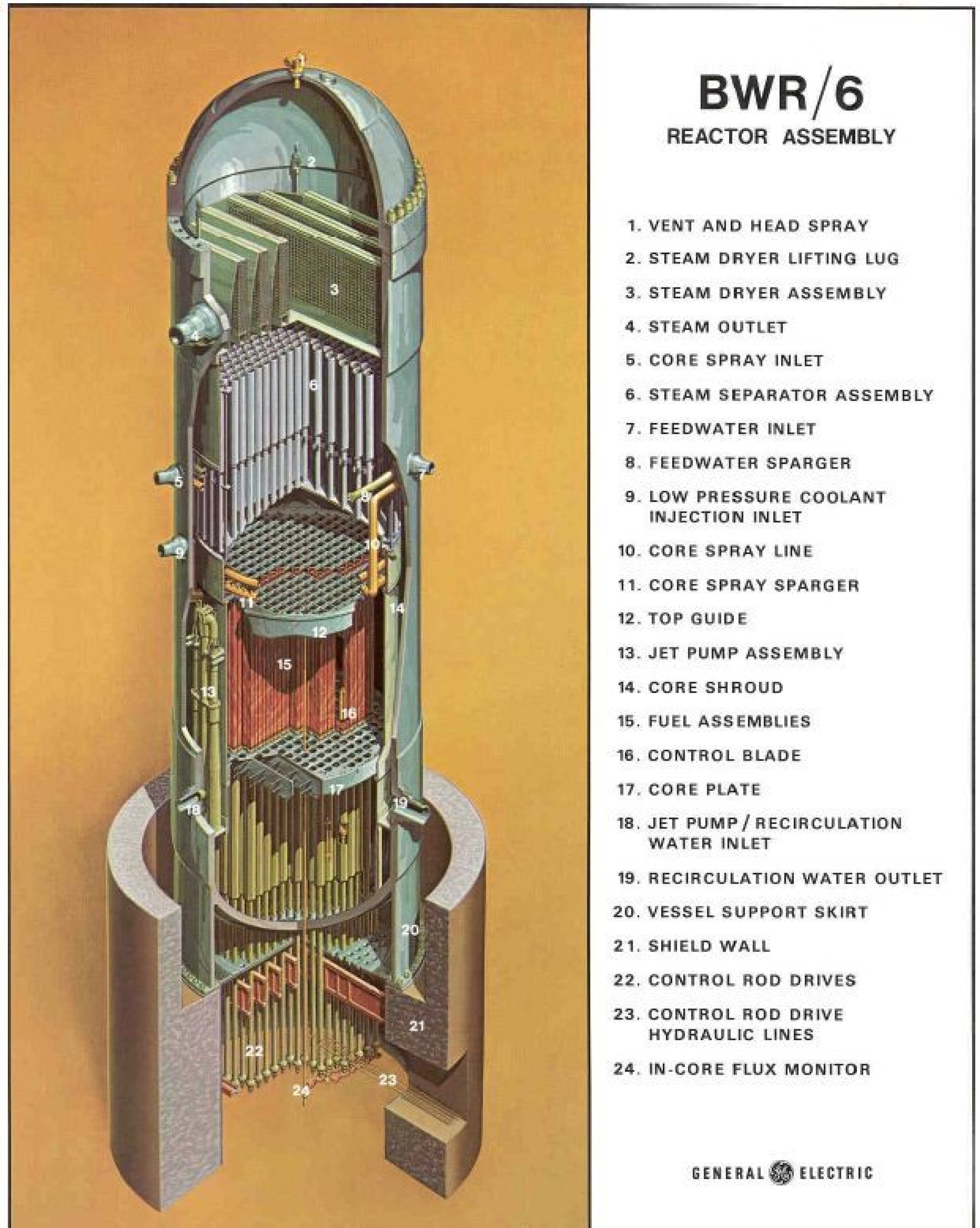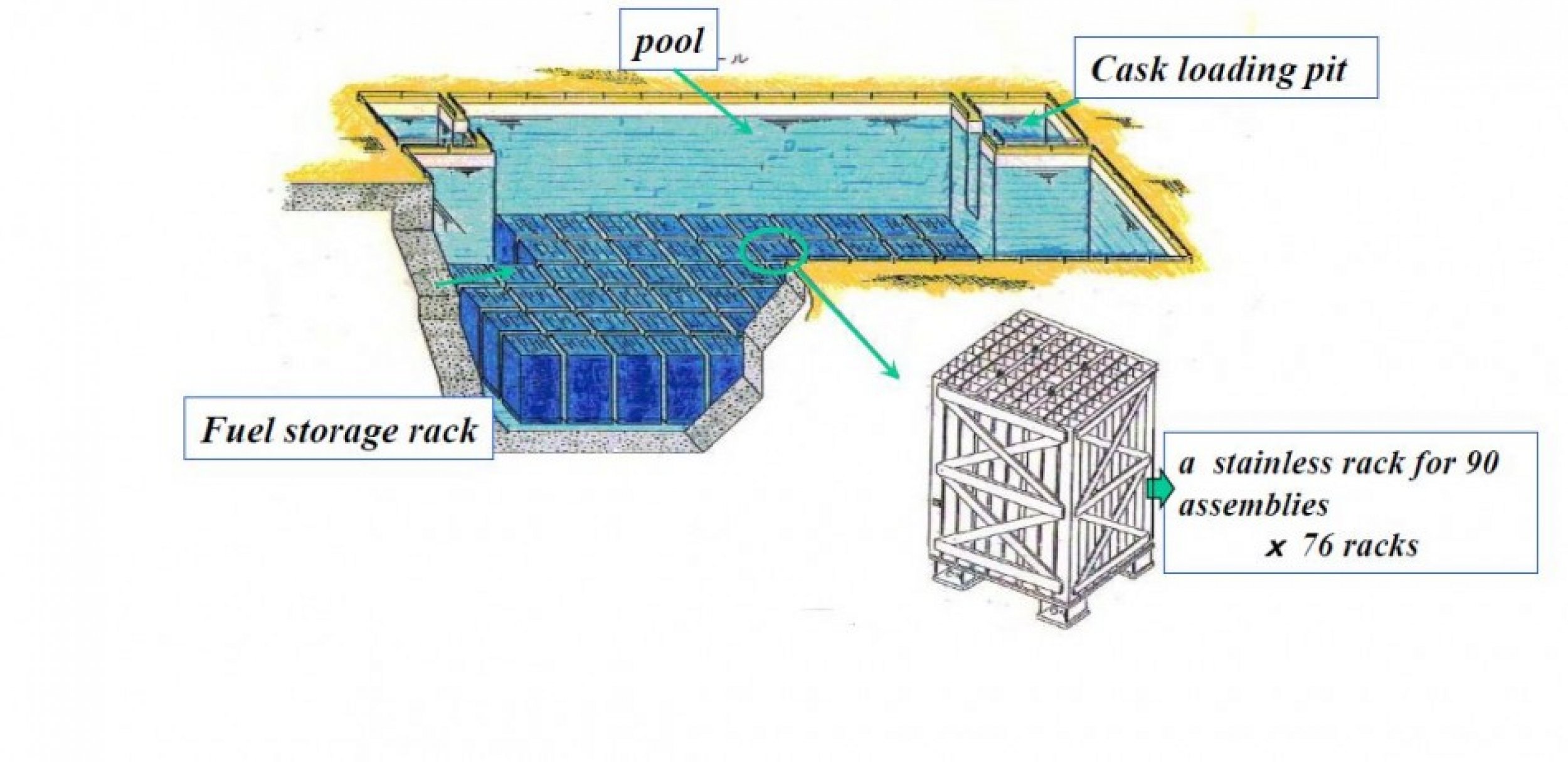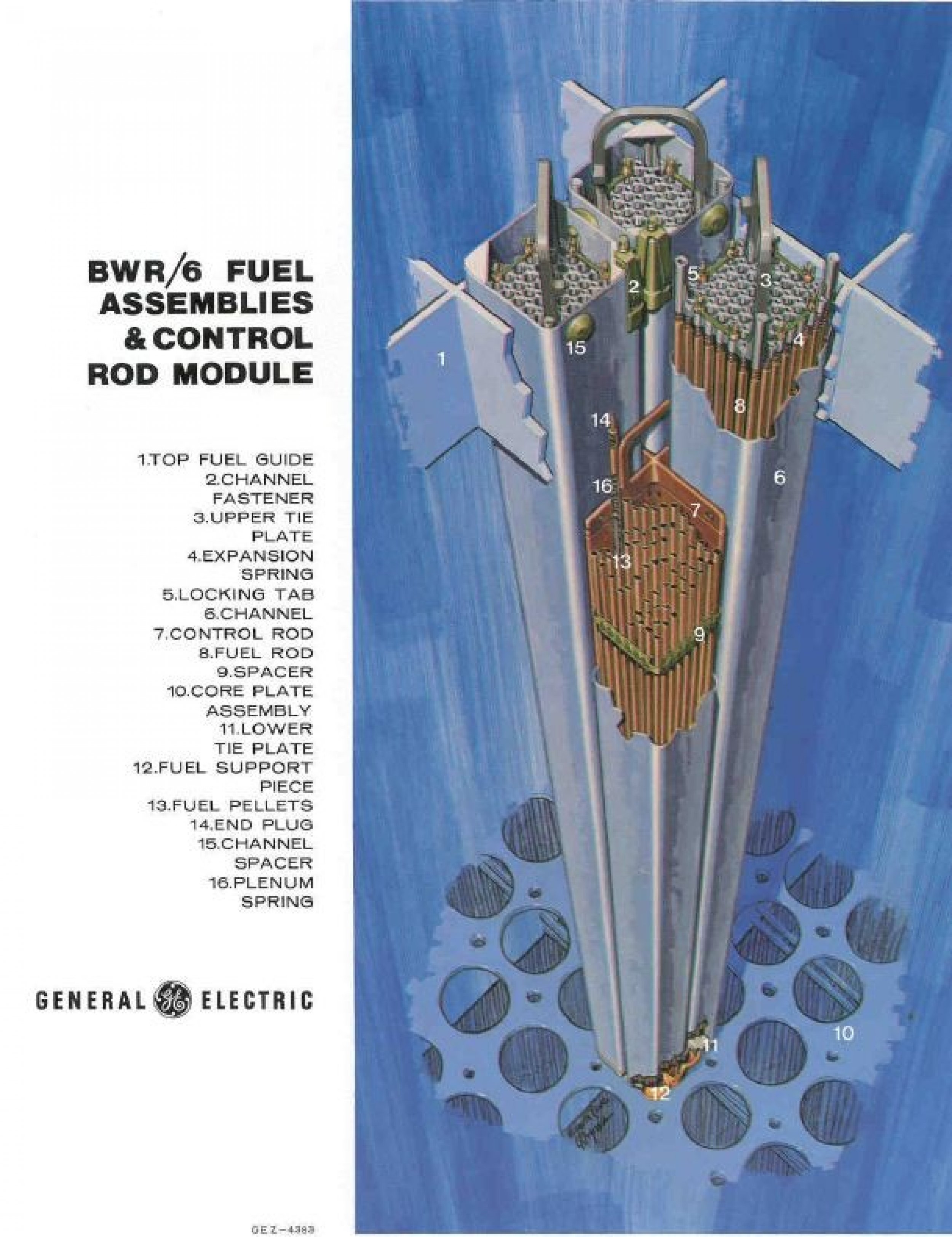The General Electric reactor design at the core of the nuclear disaster (INFOGRAPHIC)
Schematic images of the disaster struck reactors of the nuclear power plant Fukushima Dai-ichi in Japan, helping to understand the various reports about explosions and fires. There are 6 reactor blocks, which are all the same pre-1970 Boiling Water Reactor (BWR) General Electric Mark I design.
A crucial weakness of nuclear reactors is their dependence on the outside electricity grid to keep the several pumps and different water circulation systems running, which in turn are vital to keep the reactor core from overheating. In the current case of a failure of both the electricity grid and the emergency power, the reactor core starts overheating and melts down, a process that started in all of the three active reactors. The damage to the fuel rods, which normally enclose the uranium oxide fuel airtight to keep radioactive nucleids from contaminating the reactor core, allowed significant amounts of these radioactive particles to escape the containment with vented gas. The crucial purpose of a number of containment layers, to keep radioactivity inside of the reactor under all circumstances, thus failed.
The hydrogen explosions were a result of the initiated meltdown, as hydrogen starts to appear when the water level in the reactor vessel drops, the fuel rods are exposed, and reach a temperature of at least 1000 degree Celsius. As an emergency measure to counter the build up of pressure inside of the reactor vessel, gas is continously vented, with the side effect of transporting significant amounts of radioactive isotopes in the atmosphere, and blowing up the roofs of two reactors in the huge explosions that occurred.
The following graphics are showing the crucial components and housing of this reactor type:
To make a safe nuclear power plant, it is important to keep the hazardous radiation inside the reactor. For this purpose, every nuclear power plant has a shielding structure surrounding it called the containment unit, which must retain its integrity even in the worst case scenario.
The containment of this particular reactor type relies on two layers of protection, in contrast with the four layers found in many modern reactors.
The hydrogen explosions blasted away the roof construction of three reactor buildings, which may have been avoided if the buildings had a second steel shielding and concrete dome, as do many other reactors. The main consequence of this is that the fuel pools, which are at the top of the Fukushima Daiichi reactors, are now exposed to the open air with the effect that radiation, and radioactive materials in the case of a fire or explosions, can enter the atmosphere much more easily.
As a result of this catastrophic failure, the German government now made the decision to immediately shut down 7 pre-1980 reactors of a similar type which are considered too dangerous.
Manfred Zehn, a professor at the Technical University of Berlin and an expert for structural mechanics told Spiegel that he found weaknesses in the type of core reactor vessel used in old boiling water reactors of the so-called Baureihe (Type) 69.
The NY Times writes about the reactor design: The warnings were stark and issued repeatedly as far back as 1972: If the cooling systems ever failed at a Mark 1 nuclear reactor, the primary containment vessel surrounding the reactor would probably burst as the fuel rods inside overheated. Dangerous radiation would spew into the environment.
In 1972, Stephen H. Hanauer, a safety official with the Atomic Energy Commission was concerned that the smaller containment design in the 'Mark 1' system was more susceptible to explosion and rupture from a buildup in hydrogen, according the New York Times. The same scenario has now occurred in explosions at the Fukushima Daiichi plant.
One positive factor of the GE Mark I reactors in Japan seems to be that probability of a meltdown occurring was anticipated, and the reactors have a system designed to contain the molten core within the reactor building, keeping it from leaking into the ground and contaminating the ocean.
(Images and text of this slideshow are from a technical document of the U.S. NUCLEAR REGULATORY COMMISSION and can be found on their website)




© Copyright IBTimes 2024. All rights reserved.




















